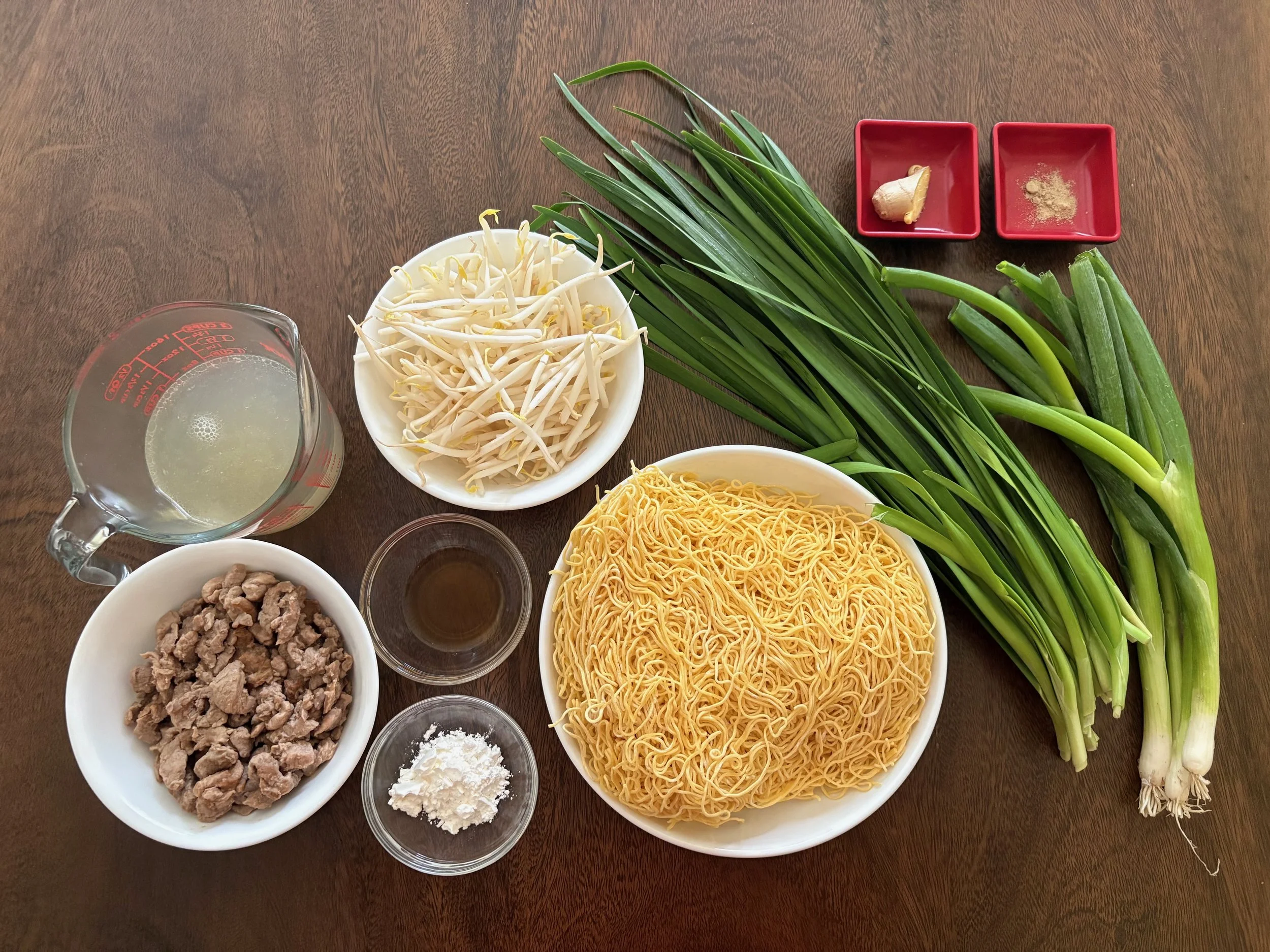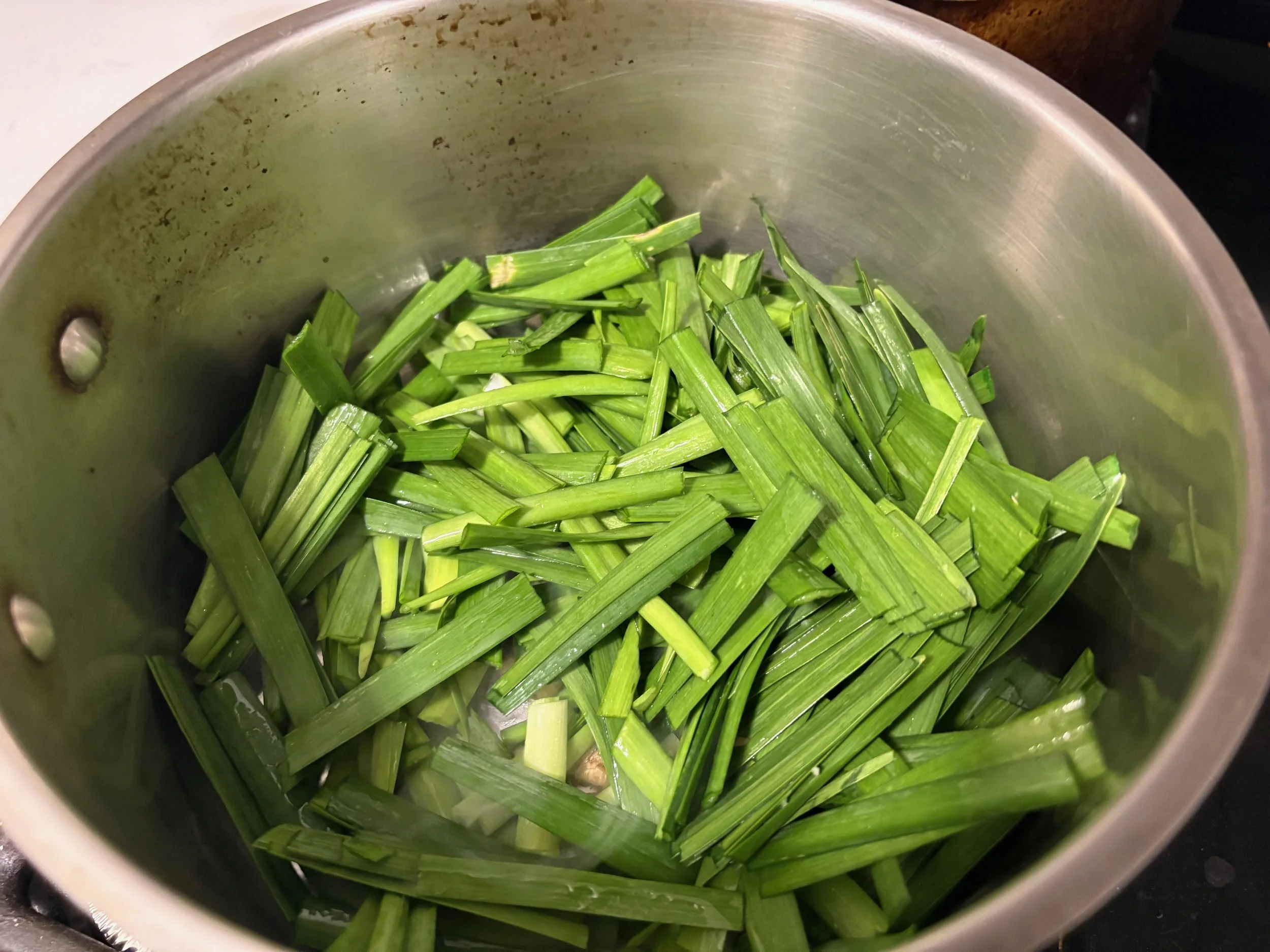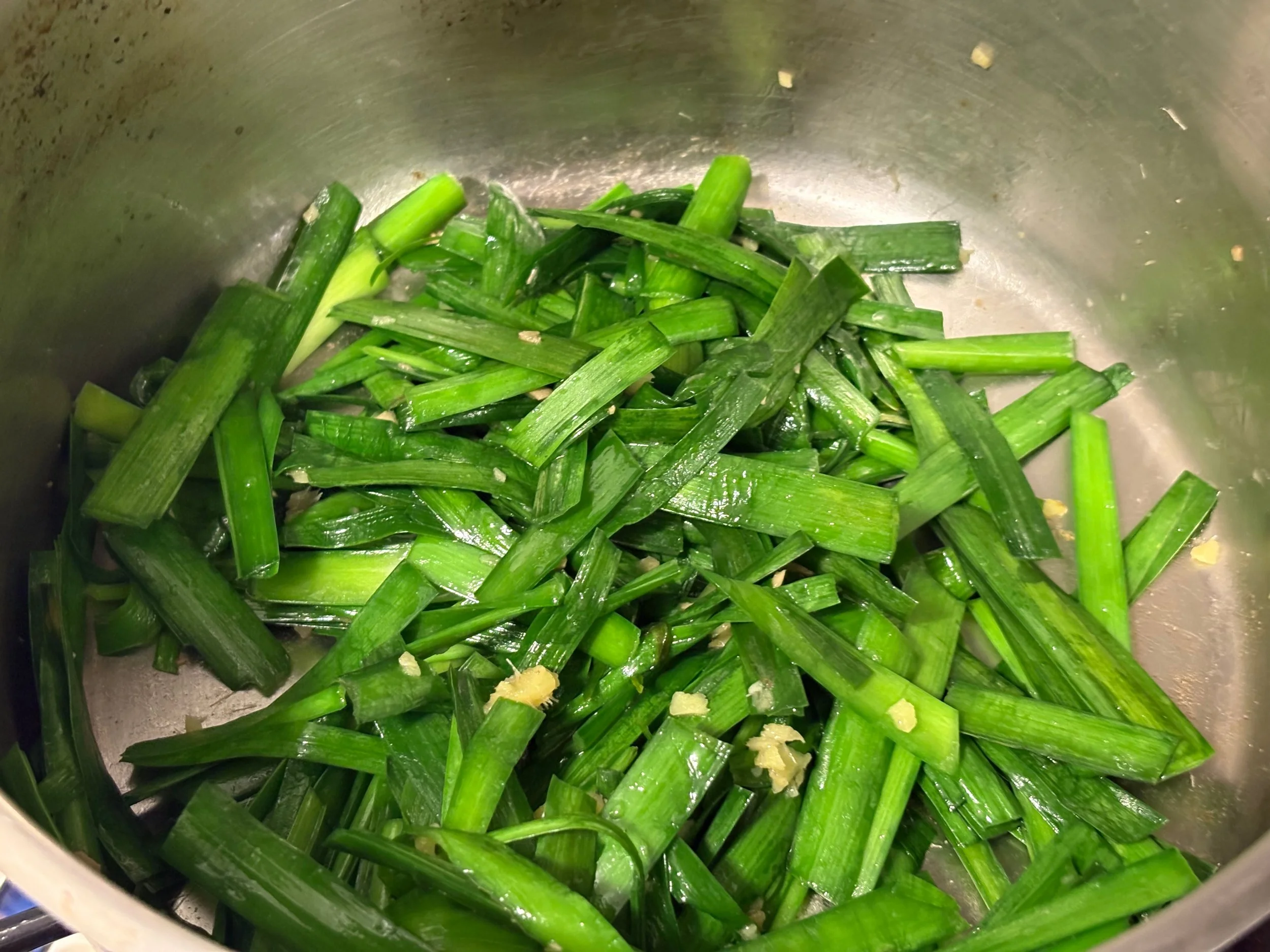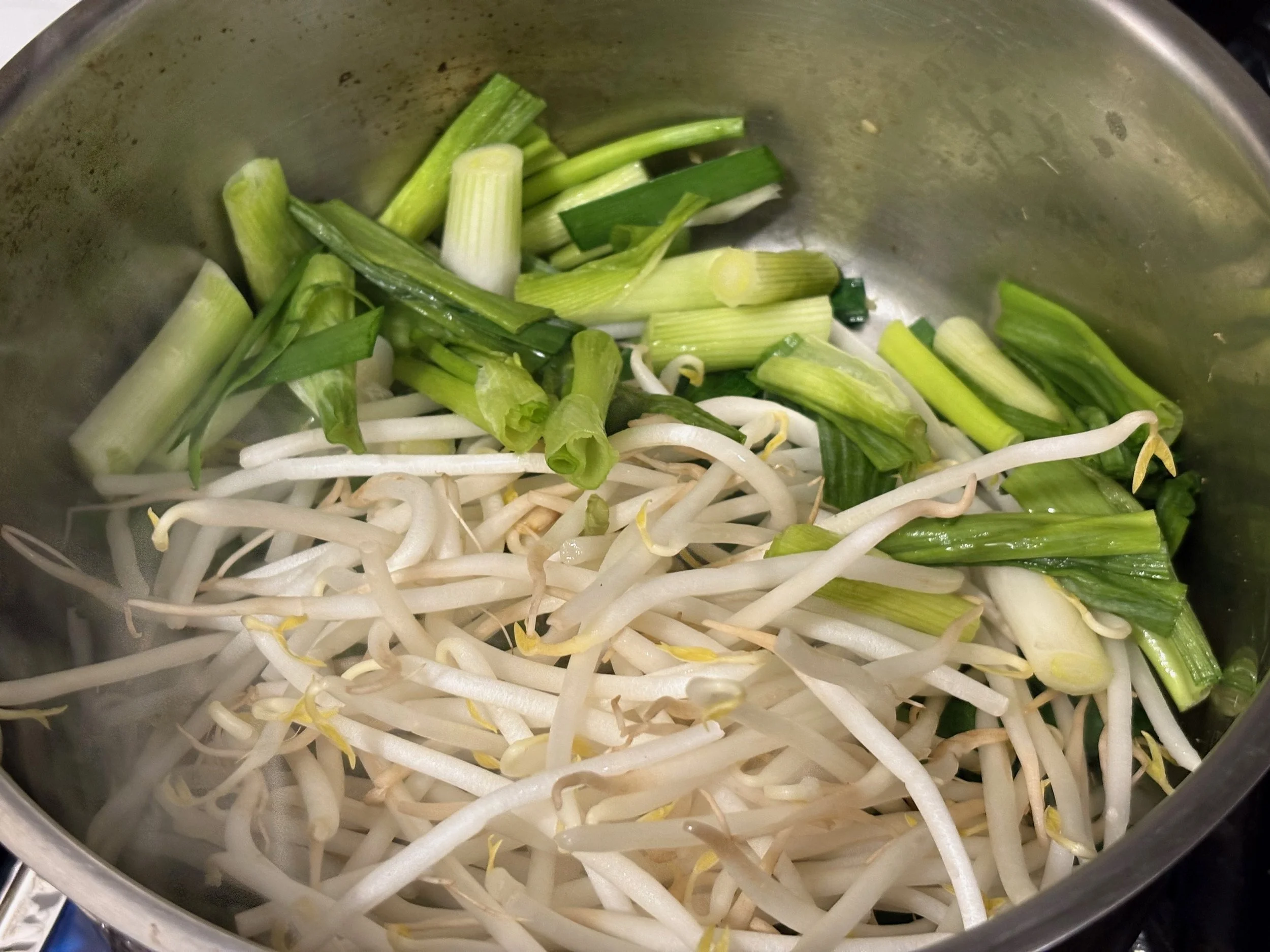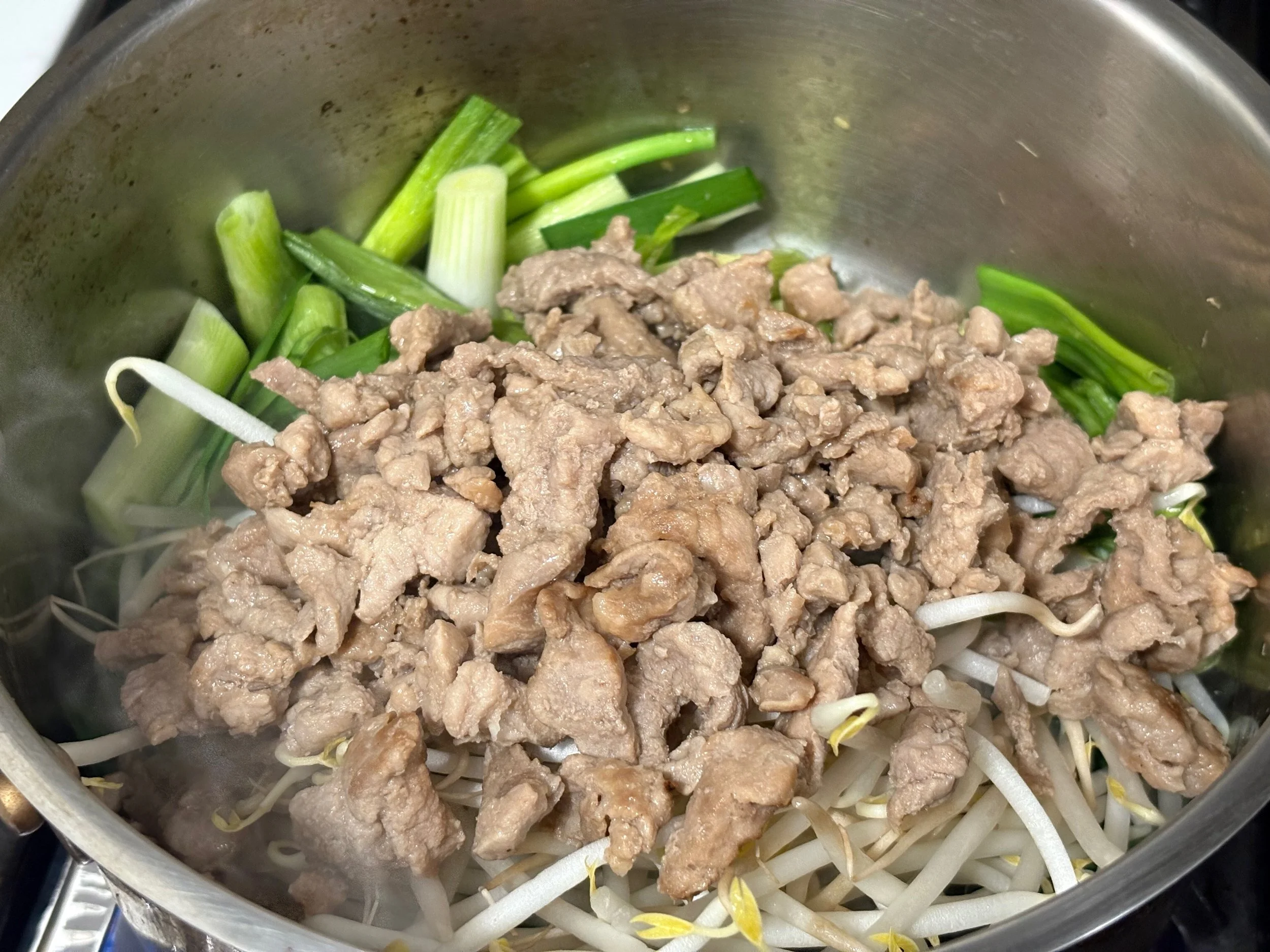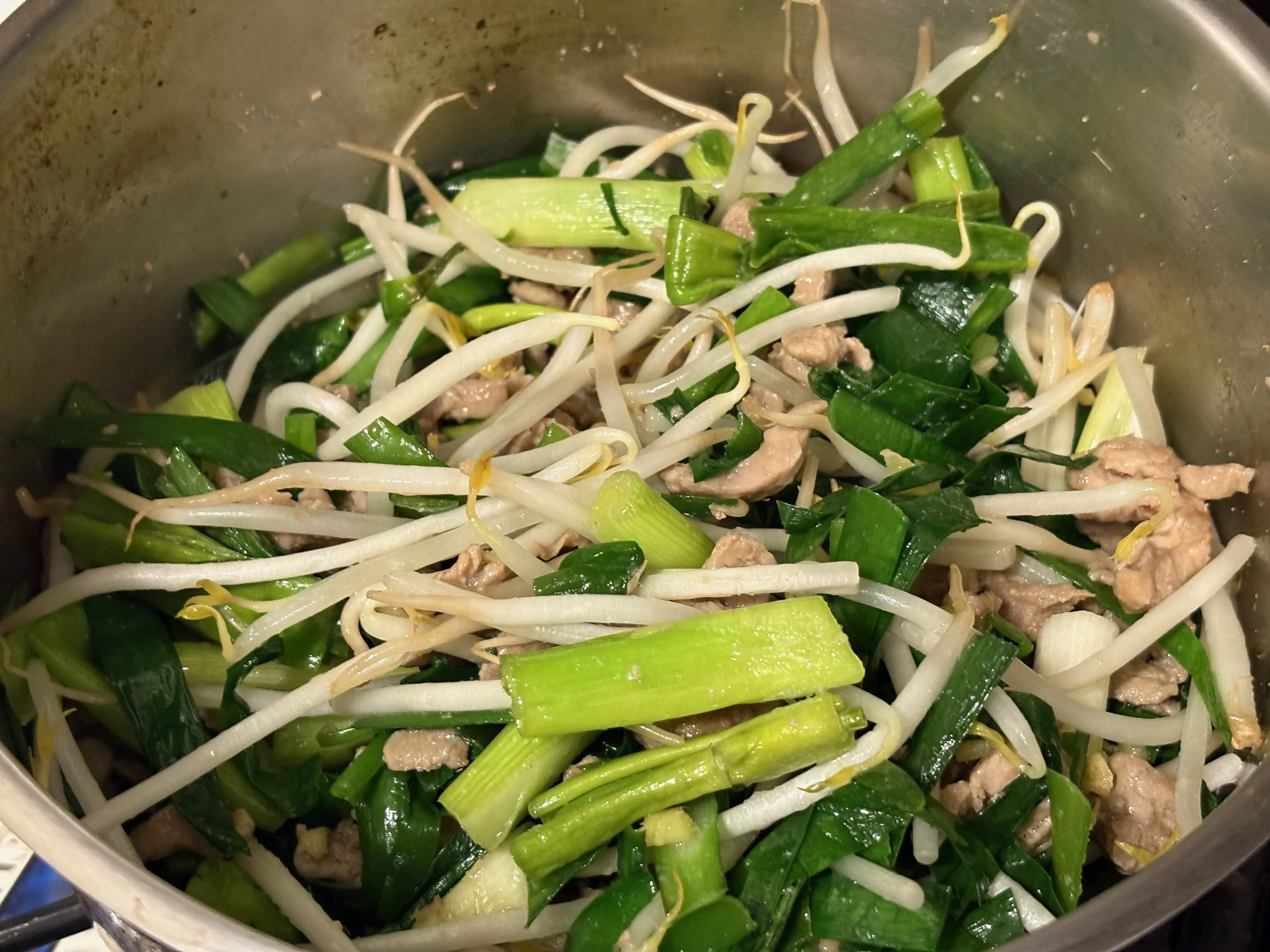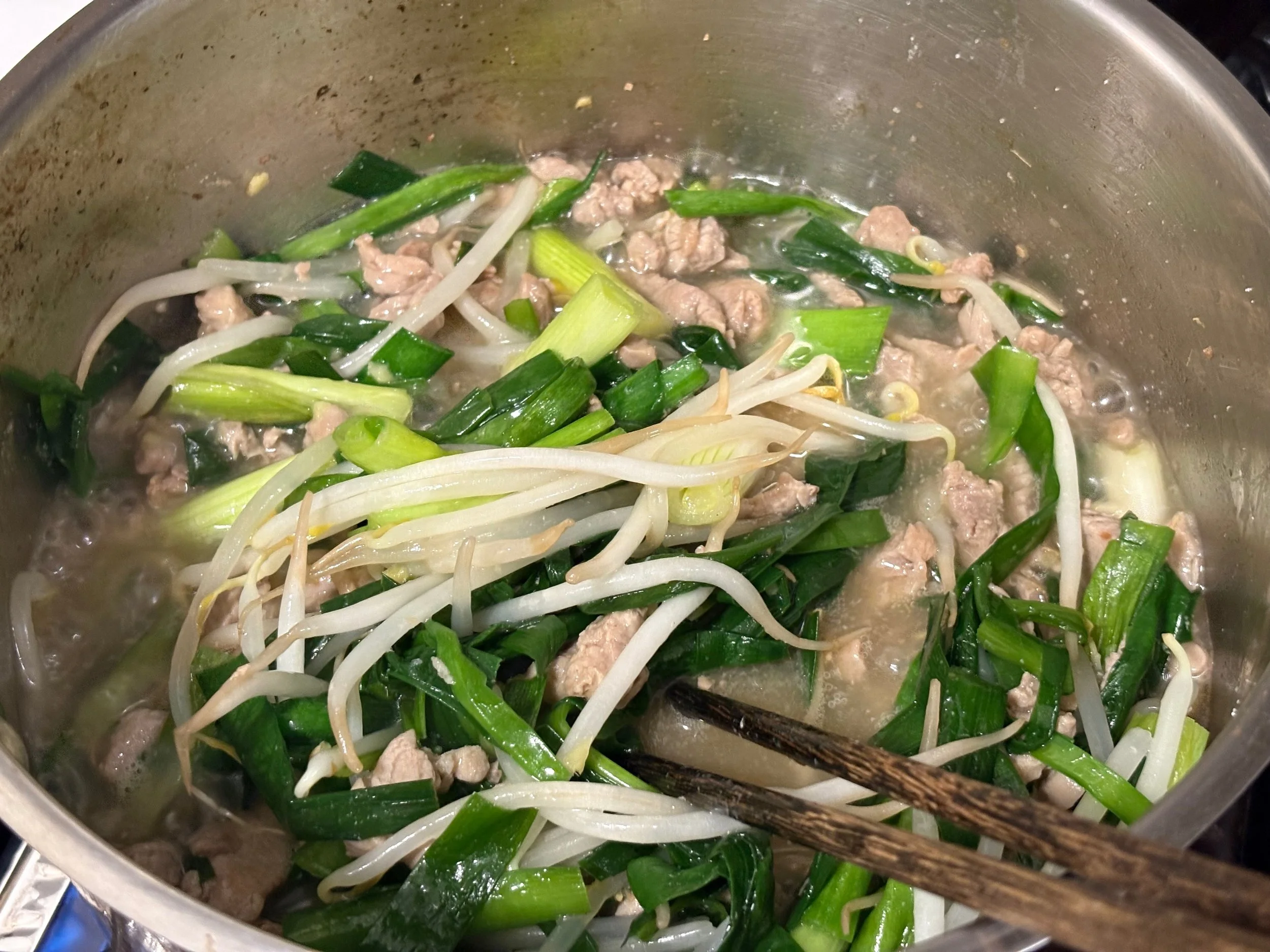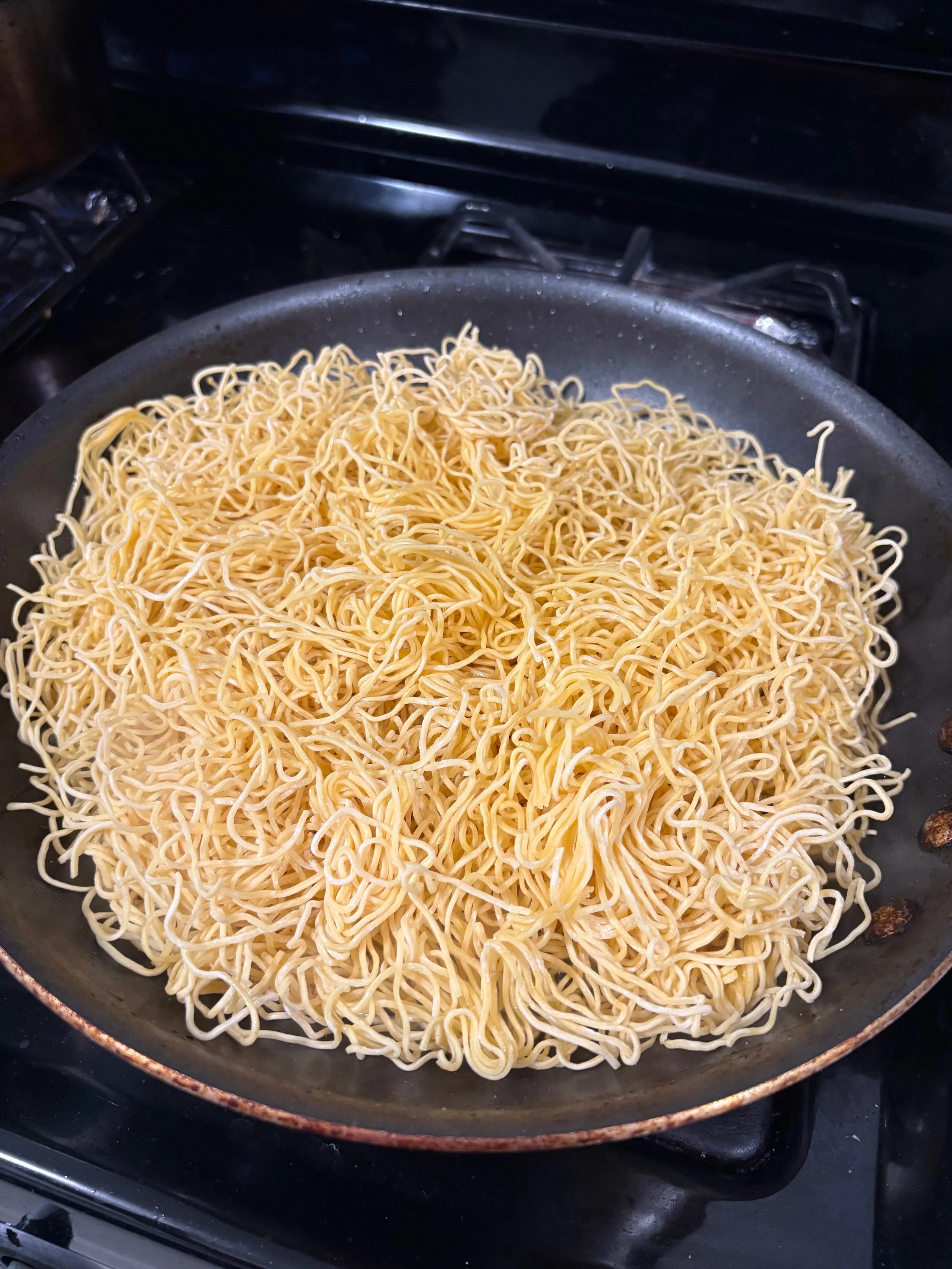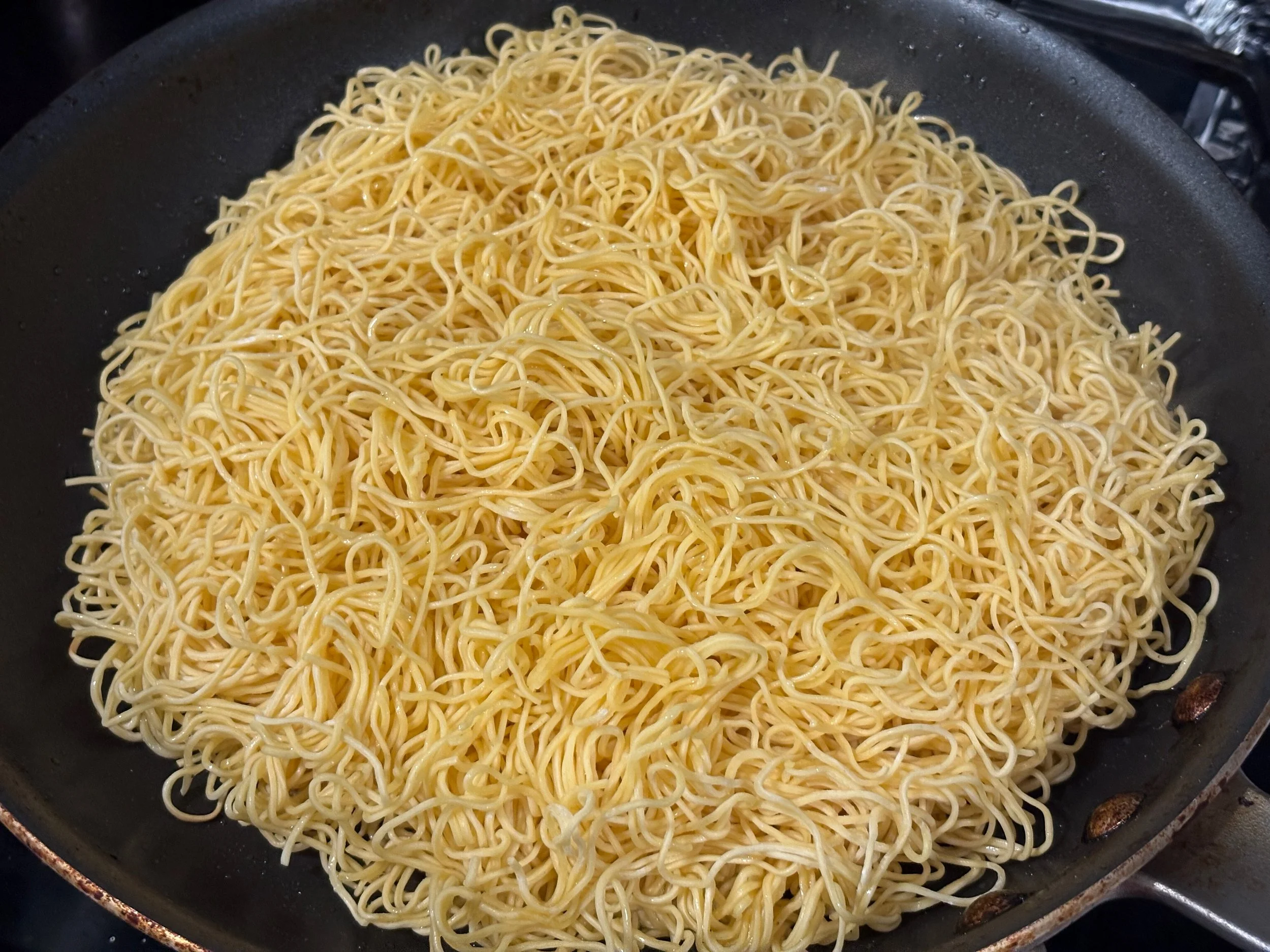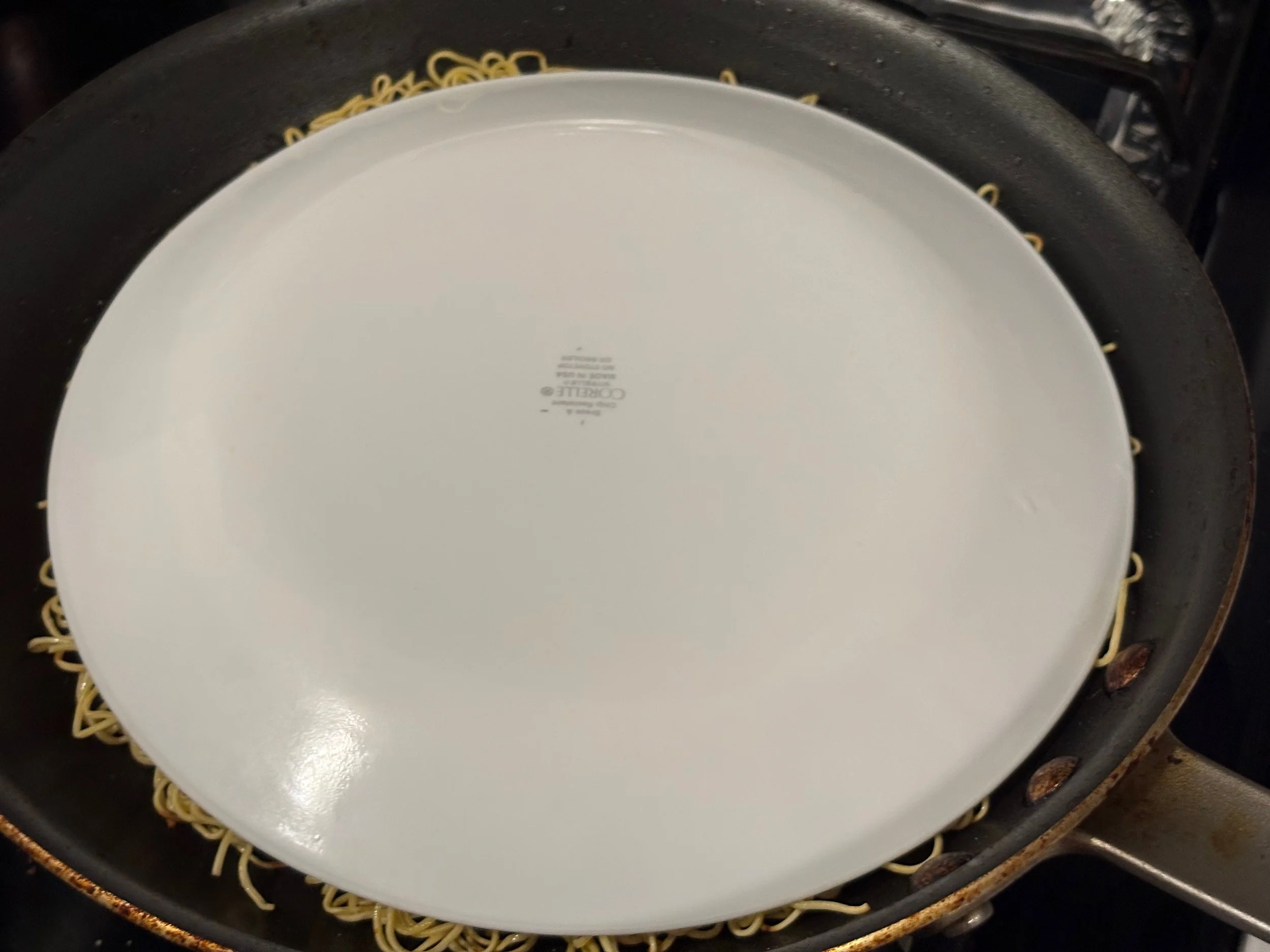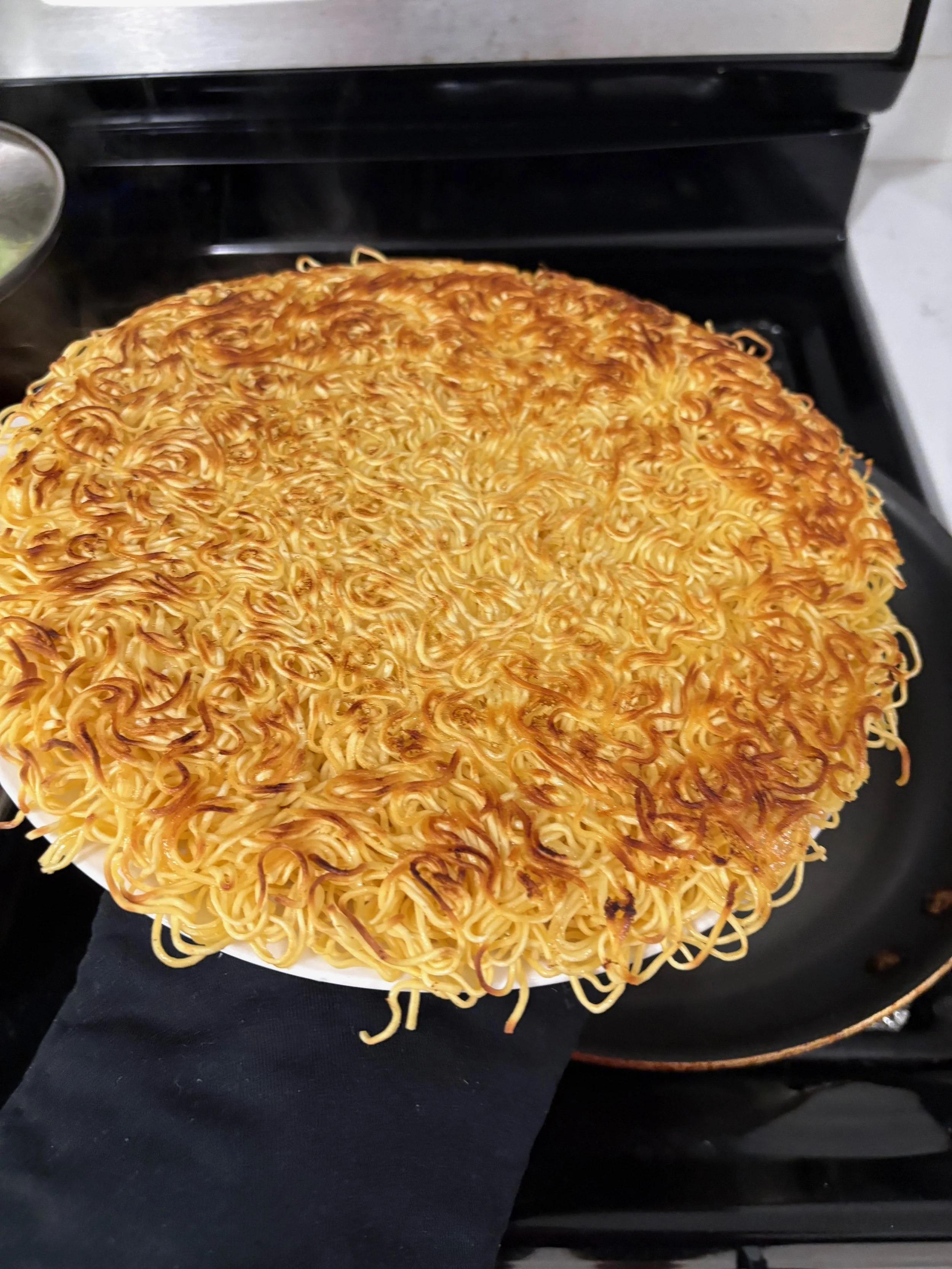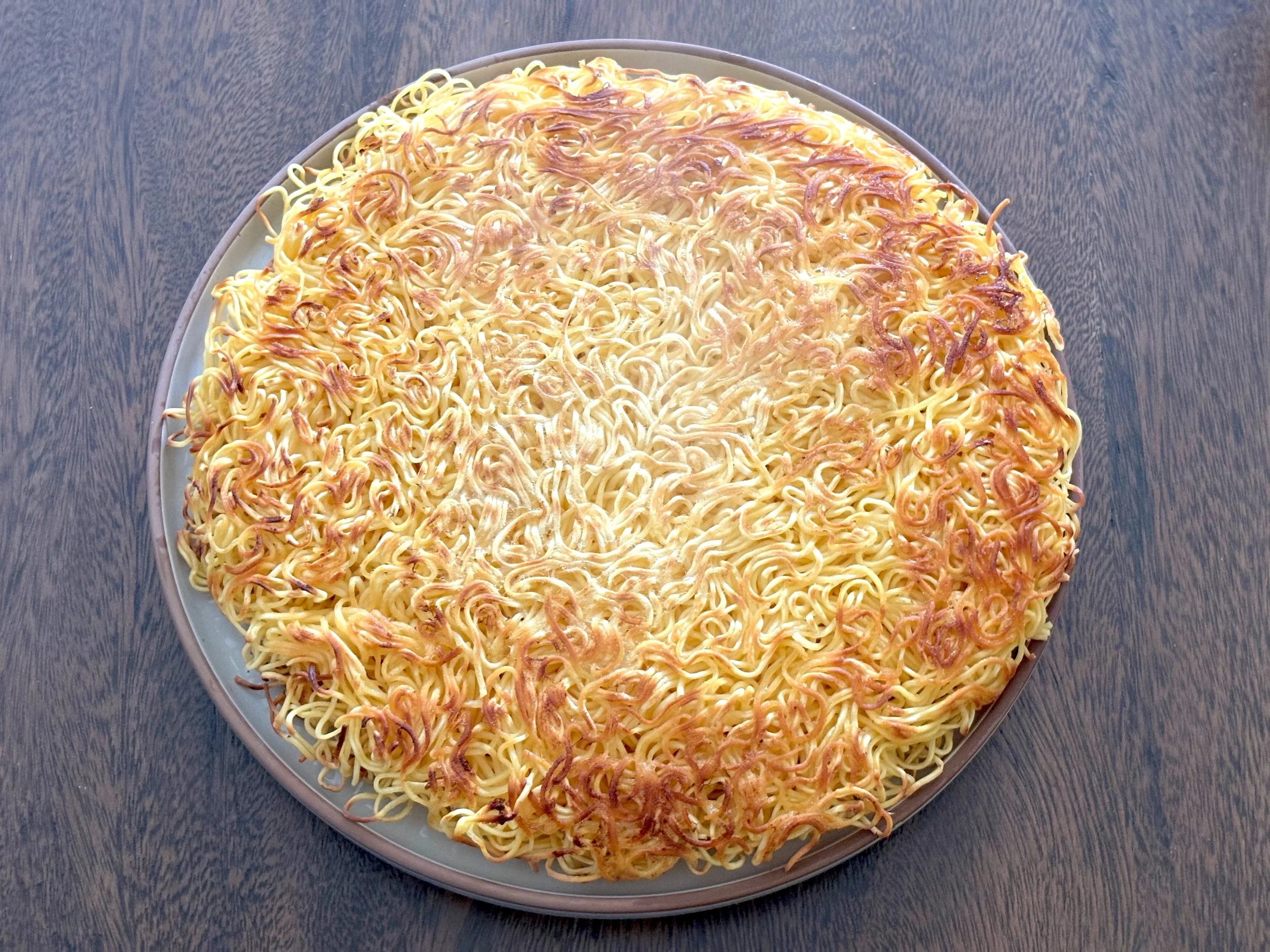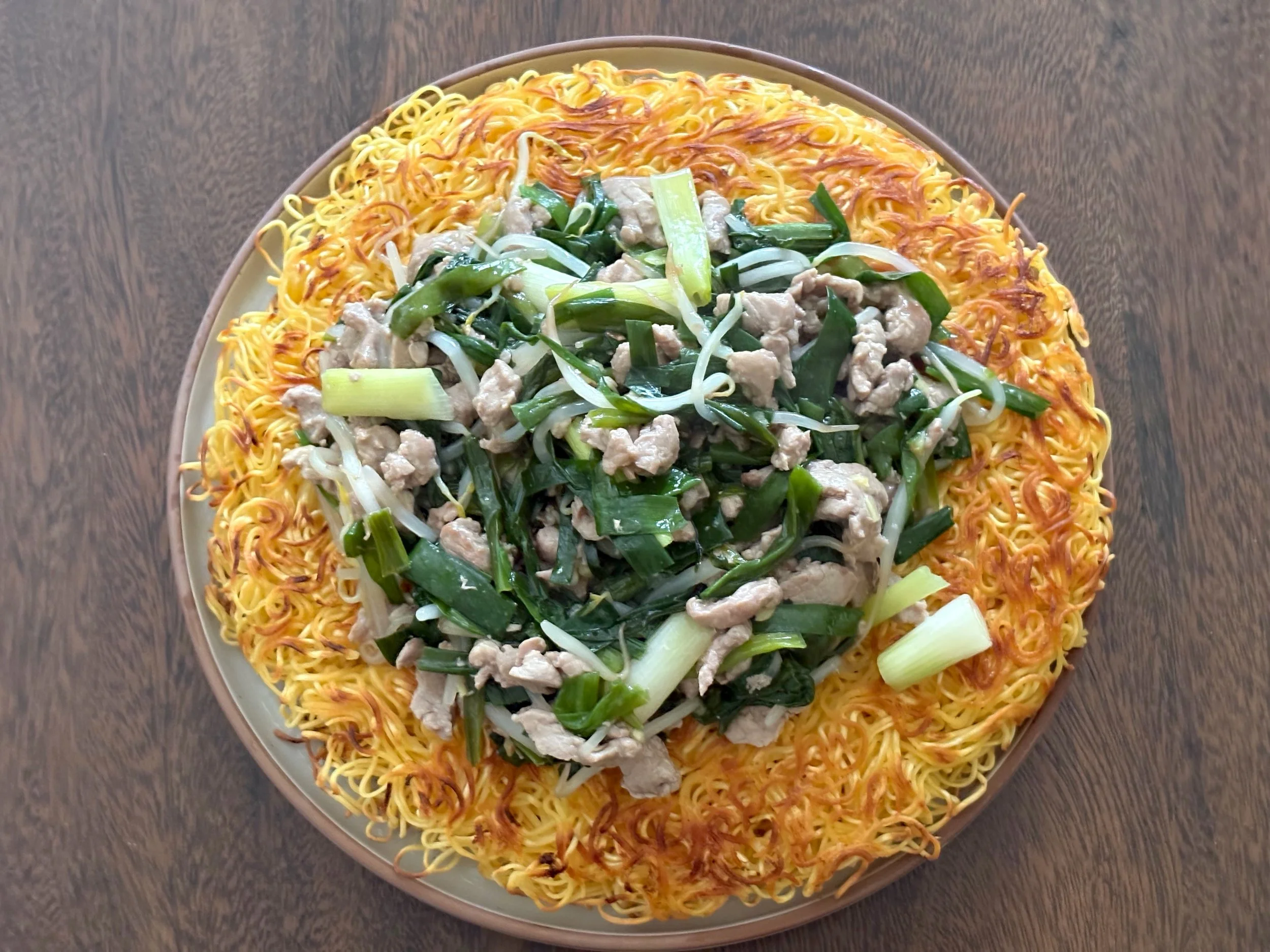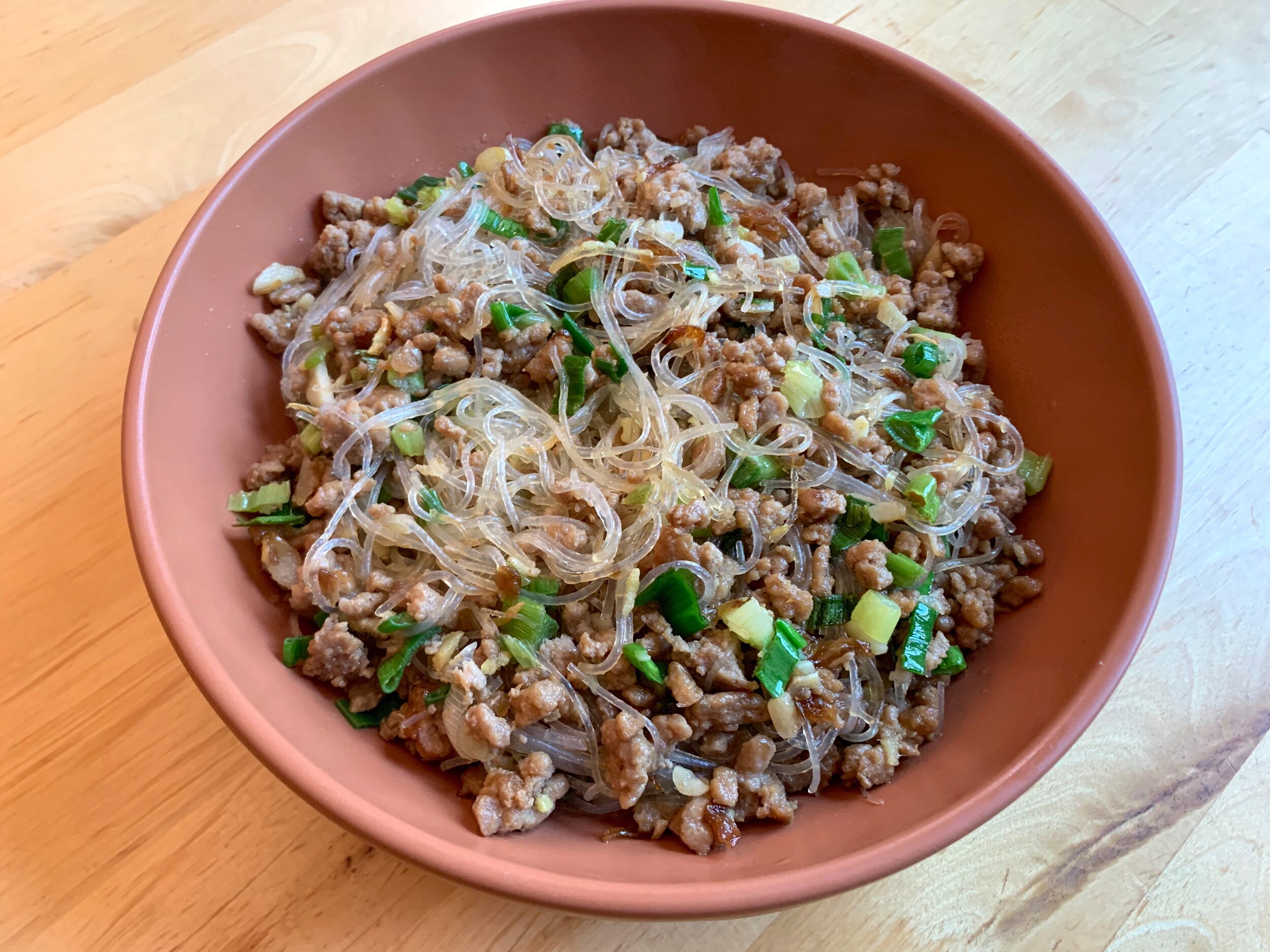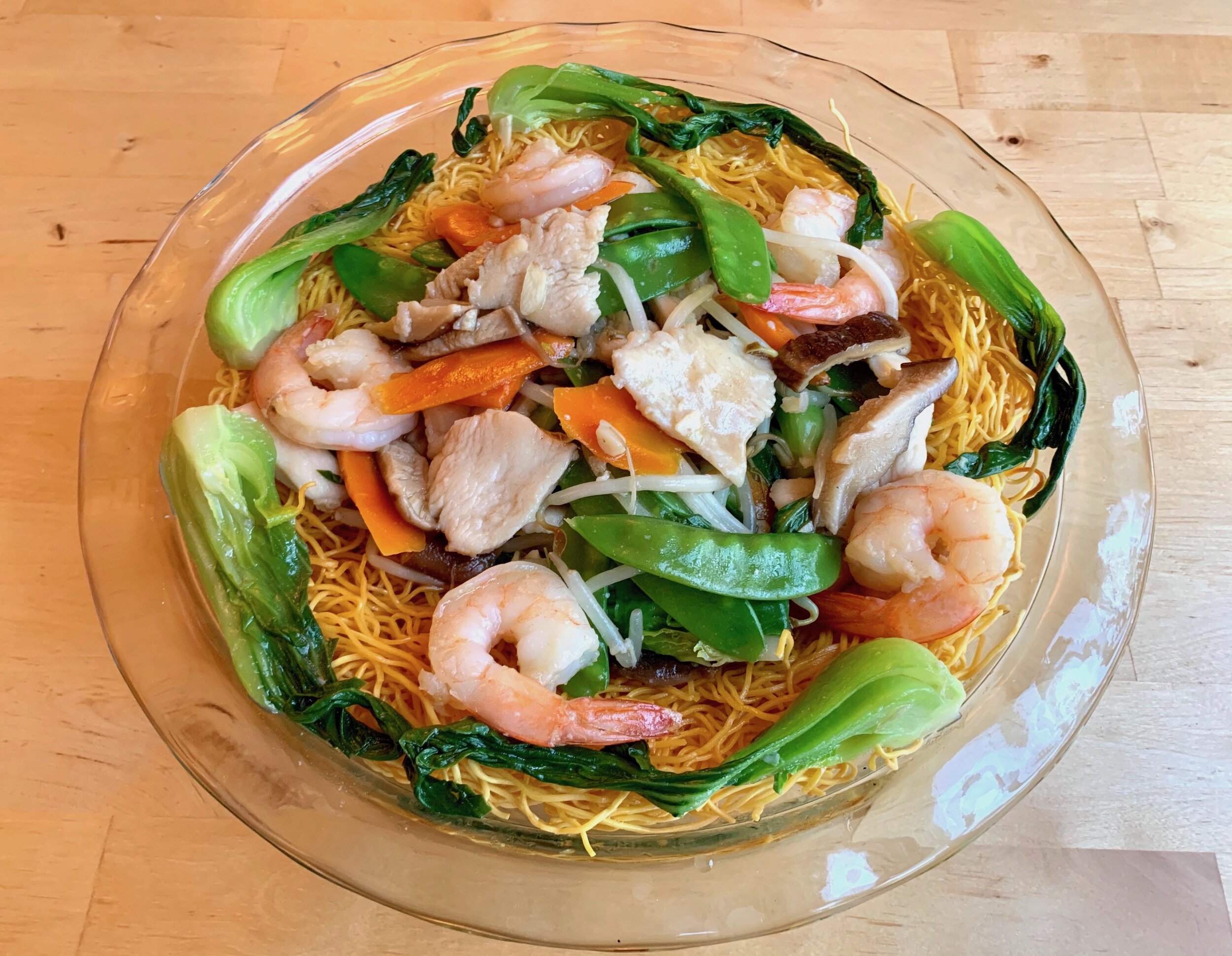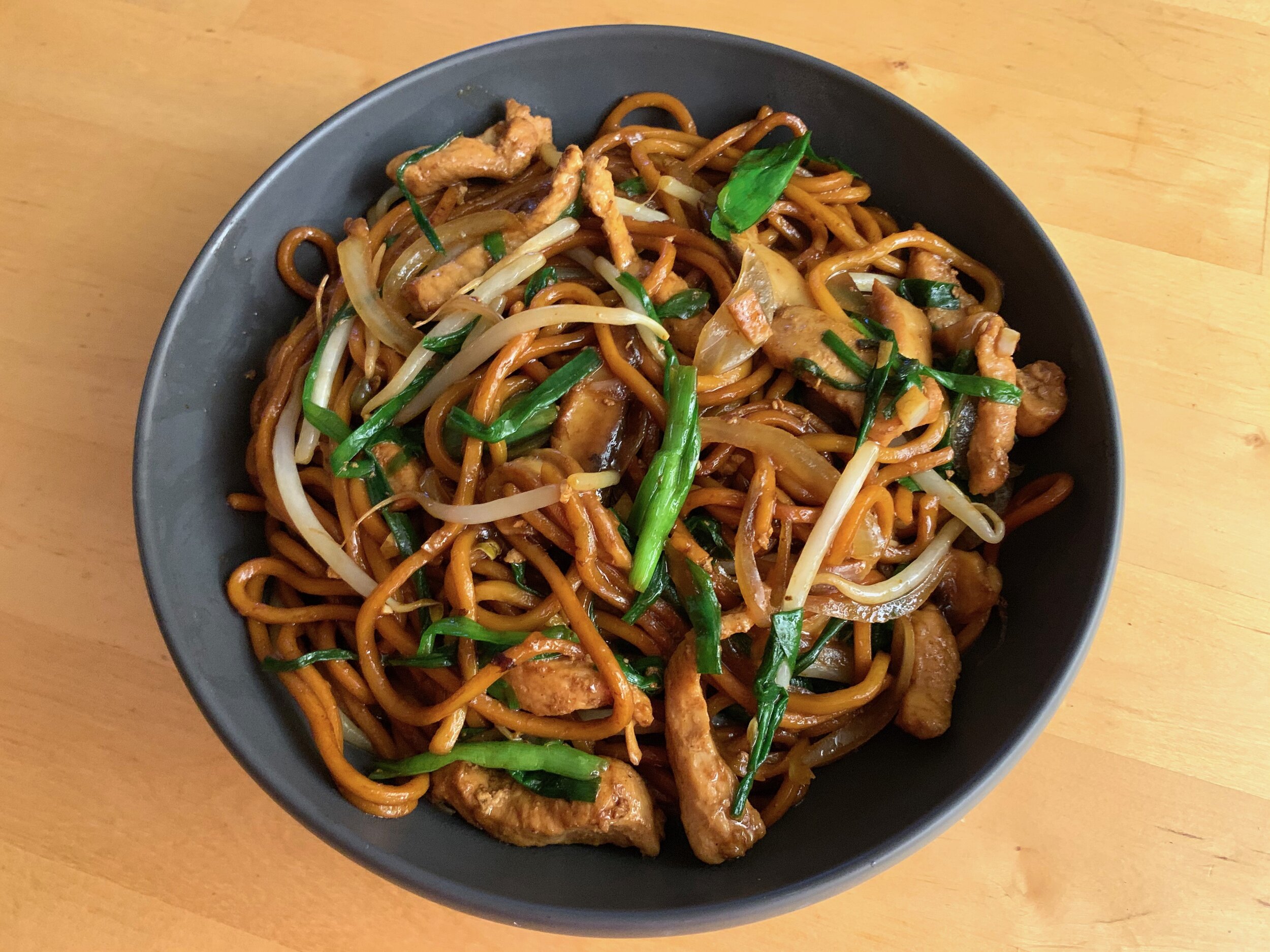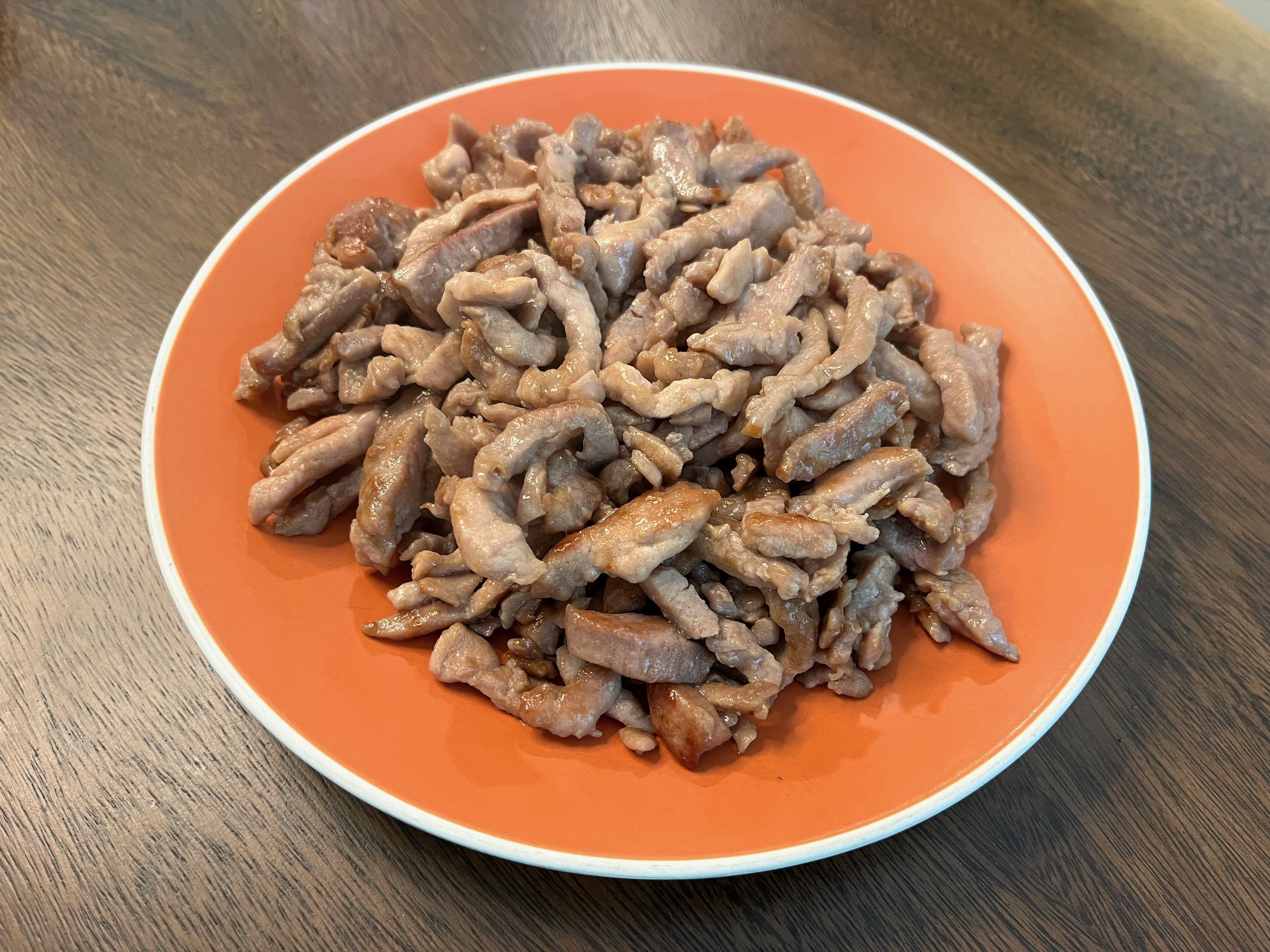Pan-Fried Noodles with Pork Slivers
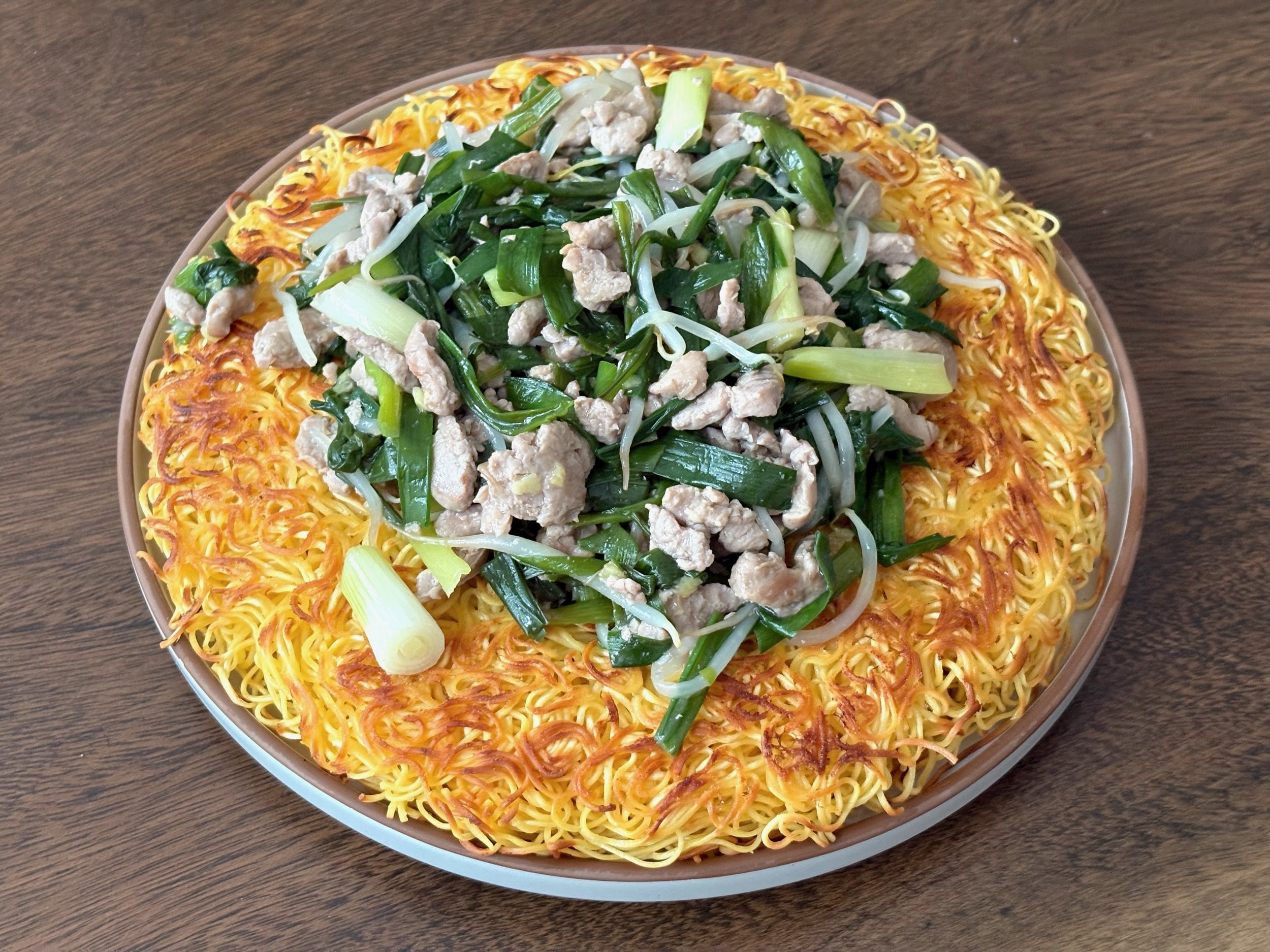
肉絲兩面黄 (Rou Si Liang Mian Huang)
Pan-fried noodles (兩面黄), a crunchy and tender nest of noodles topped with a savory stir-fry, are often the centerpiece of a meal at Cantonese and Hong Kong-style restaurants. This version is topped with a delicately flavored “white sauce” which highlights the pork and garlic chives.
Ingredients
For the Noodles
12 oz thin Hong Kong-style egg noodles
Vegetable oil
For the Stir-Fry
8 oz marinated pork slivers, cooked
½ in ginger, minced
4 oz garlic chives, chopped
2 cups mung bean sprouts
3 scallions, chopped
1 tsp Shaoxing rice wine
¼ tsp white pepper
1 cup pork or chicken stock
2 tsp cornstarch
Salt to taste
Vegetable oil
For this recipe, we can save some time by using prepared marinated pork slivers (our recipe here). Prepare the vegetables by chopping the garlic chives and the scallions into pieces about an inch and a half long. Once all of your stir-fry ingredients are ready, we can begin. Heat 1 tablespoon of vegetable oil in a skillet over medium heat. This is perhaps a bit more oil than we’d use normally—the extra oil is to help prevent the garlic chive leaves from sticking to each other, as they are wont to do. When the oil is hot, add the minced ginger. Fry for 30 seconds, or until the ginger is fragrant. Then add the chopped chives to the skillet and fry, stirring constantly, for about 2 minutes, or until the chives start to soften.
Next up are the rest of the stir-fry ingredients: the rice wine, white pepper, bean sprouts, scallions, and cooked pork slivers. Stir-fry for 2 more minutes, or until the ingredients are just warmed through—we don’t want to overcook the pork.
Meanwhile, combine the pork or chicken stock with 2 teaspoons of cornstarch in a bowl, then pour the stock into the skillet. The cornstarch will thicken the sauce as soon as the stock reaches a boil. Stir well and simmer for a minute or so. Season the stir-fry with salt to taste. Because we aren’t using either soy sauce or oyster sauce in this dish, expect to salt liberally. Then remove the stir-fry from the heat and set aside.
Now, we can turn our attention to the crispy noodles. There are many varieties of Chinese egg noodles, but for this recipe, we will use fresh Hong Kong-style thin egg noodles, sometimes labeled as “Hong Kong pan-fried noodles.” [1] These noodles do not have to be boiled before frying, which saves us a great deal of time and labor. If you can’t find fresh noodles, you may be able to find dried ones instead—cook these according to package instructions, then drain well. Place the noodles in a large bowl, and run your fingers gently through them, breaking up any clumps or knots. Some restaurants prepare this dish by deep-frying the entire cake of noodles. This method is difficult to do at home, and in my opinion also results in a worse dish—the noodles are uniformly crunchy, and the web of noodles will retain a lot of the oil, making the final product greasy. I prefer the more traditional pan-frying method, which produces contrasting layers of crunchy and tender noodles, and very little grease!
Heat 1 tablespoon vegetable oil in a clean nonstick pan over medium heat. When the oil is up to temperature, add the noodles to the pan. Using a pair of chopsticks, swirl the noodles about the pan until the cake of noodles is of a uniform thickness. Then add ¼ cup of water to the pan, which will create a bit of steam and help cook the noodles in the center of the cake. Monitor the bottom of the noodle cake, using a spatula to peek underneath and make sure it isn’t burning, and that your burner and pan do not have any hot spots. [2] Cook the noodles for about 5 minutes, or until the bottom of the noodle cake is golden brown and crispy. If the noodles were on the dry side and still seem undercooked, repeat the steaming process with a bit more water.
Now, it’s time to flip the noodle cake. If you feel very bold, you can go ahead and flip the noodle cake in the air, catching it back in the pan. If you’re not feeling up to that, however, there’s a much easier way of flipping the noodles. Simply slide the noodle cake onto a large plate. Then place a second plate upside down on the first. By inverting the two plates, we will flip the noodles cooked side up. Add another tablespoon of oil to the pan, then return the noodle cake to the pan, un-fried side down. Fry the noodle cake for 5 more minutes, again checking the bottom for scorching, until both sides are crisp and the noodles are completely warmed through. Remove the fried noodle cake to your serving dish.
Ladle the stir-fry mixture over the noodle cake and serve the dish immediately, before the noodles get soggy!
Substitutions
Some other ingredients that can work well with this style of sauce include yellow chives (which have a more delicate flavor than regular garlic chives), shiitake mushrooms, or fresh bamboo shoots.
[1] Confused about which egg noodles to buy? Visit Serious Eats for a complete guide to Chinese egg noodles.
[2] If you do see hot spots, begin rotating the noodle cake every 30 seconds.
Recipe
Prep Time: 10 min Cook Time: 20 min Total Time: 30 min
Difficulty: 4/5
Heat Sources: 2 burners
Equipment: skillet, nonstick pan
Servings: 4
Ingredients
For the Noodles
12 oz thin Hong Kong-style egg noodles
Vegetable oil
For the Stir-Fry
8 oz marinated pork slivers, cooked
½ in ginger, minced
4 oz garlic chives, chopped
2 cups mung bean sprouts
3 scallions, chopped
1 tsp Shaoxing rice wine
¼ tsp white pepper
1 cup pork or chicken stock
2 tsp cornstarch
Salt to taste
Vegetable oil
Instructions
1. Heat 1 tbsp vegetable oil in a skillet over medium heat. When the oil is up to temperature, add the minced ginger. Fry for 30 seconds or until fragrant.
2. Add the chopped chives to the skillet and stir-fry, stirring constantly, for 2 minutes or until the chives start to soften.
3. Add the rice wine, mung bean sprouts, chopped scallions, cooked pork slivers, and white pepper to the skillet. Stir-fry for 2 more minutes.
4. In a bowl, mix 2 tsp cornstarch with the stock. Pour the stock into the skillet and stir well to let the sauce thicken. Season well with salt to taste, then remove from the heat and set aside.
5. Remove the noodles from the bag and place in a large bowl, gently separating any clumps of noodles with your fingers.
6. Heat 1 tbsp vegetable oil in a clean nonstick pan over medium heat. When the oil is up to temperature, add the noodles into the pan. Swirl the noodles about the pan so that the thickness of the noodle cake is uniform. Then add ¼ cup of water to the pan and cook for about 5 minutes, or until the bottom of the noodle cake is golden brown and crispy.
7. Slide the noodle cake out of the pan and onto a large plate. Place a second large plate over the first, then use the two plates to flip the noodle cake over.
8. Add an additional 1 tbsp vegetable oil to the pan, then slide the noodle cake back into the pan, un-fried side down. Fry for 5 more minutes, or until both sides are crisp. Remove the noodle cake to the serving dish.
9. Top the fried noodle cake with the stir-fry, then serve immediately.
